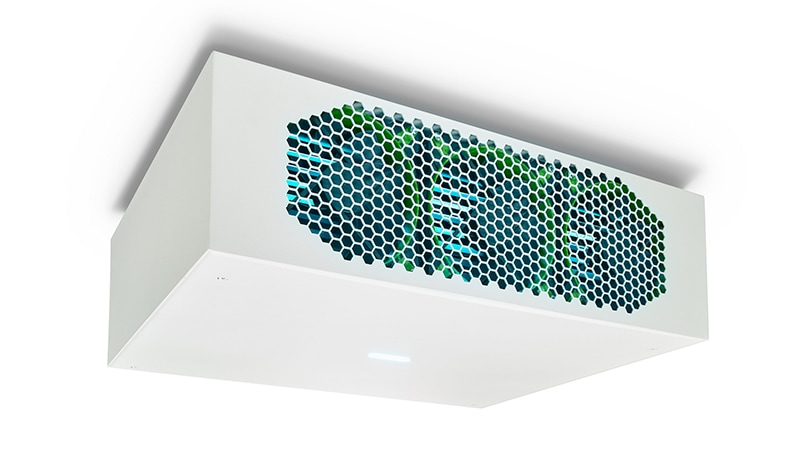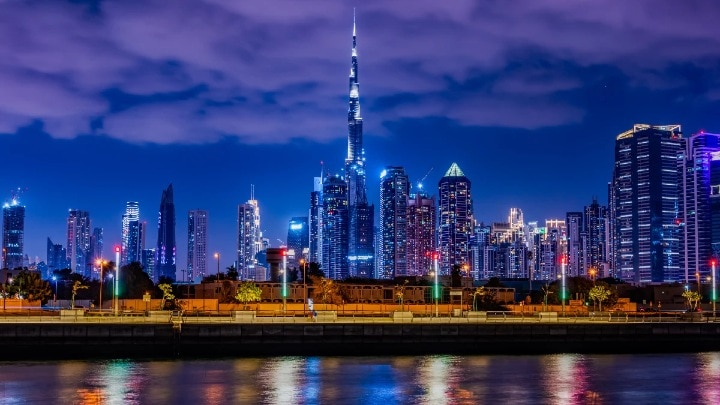December 12th, 2021
A study has been launched into the feasibility of using air cleaners to reduce the spread of COVID-19 in 30 primary schools in Bradford.
As the UK is now out of lockdown, there is a renewed focus on ensuring that workplaces, facilities, and all manner of public spaces are safe for use. The risk of infection from the virus causing COVID-19 infection remains at an all-time high as new variants continue to be announced. High-density areas, such as schools with children from different households mingling under one roof, can act as an incubator, with some cold and flu viruses that can survive in the air and on surfaces for up to 72 hours. As we adjust to this new reality, better hygiene practices have become the norm in our everyday routines. As a result, there is an increasing demand for effective disinfectant solutions that can also avoid placing unnecessary restrictions on any environment. This has opened the opportunity for a tried and tested form of disinfection – ultraviolet (UV) technology.
There are three types of UV wavelengths found in sunlight. First, there’s UV-A and UV-B, which you may recognise from sunscreen labels. Then there is UV-C, a wavelength that has a powerful germicidal property and is now stepping in to provide an extra level of protection alongside vaccinations, masks, and social distancing. The efficacy of UV-C as a powerful form of disinfection for air, surfaces, objects, and water is well known and has been scientifically tested over the years. The technology has proven highly effective against all pathogens tested to date, including SARS-CoV-2, the virus causing COVID-19.
UV-C as a technology isn’t new – it’s been used in hospitals and agriculture for decades to disinfect equipment, food and produce. The power of UV-C lighting for disinfection is well known, with applications widely tested since the 1930s and 1940s. With the COVID-19 pandemic, there has been a resurgence of interest in this relatively undersung technology.
For more than 35 years, Signify (the former Philips Lighting) has been at the forefront of UV technology with a proven track record of innovation and strong application expertise. Recently, new families of UV-C products have been launched – portable, and fixed ceiling/wall mounted air units, disinfection chambers for objects, and surface luminaires that disinfect environments when no one is present.
The Bradford school’s pilot
Recently, the University of Leeds announced that a study has been launched into the feasibility of using air cleaners to reduce the spread of COVID-19 in 30 primary schools in Bradford. Among other technologies, eight out of the 30 schools are trialling Ultraviolet (UV-C) technology. This is an air purification approach that involves cycling the air through an enclosed unit where it is exposed to an ultraviolet germicidal light, which inactivates microorganisms, including viruses. The UV-C “Active Air” devices, installed by Powercor, are designed to continuously disinfect the air in any indoor space. The devices can be installed on a wall or on a ceiling across many environments, such as restaurants and bars, offices, shops and schools. Fans inside the device pull the air in from the room; the air then passes through the specially designed and contained UV-C chamber to disinfect the air. The clean air is then recirculated out of the device into the room.
Poor air quality is a major cause of illness, and children are particularly vulnerable to its effects. Throughout the pandemic, many students fell ill due to the virus, posing a severe risk to their and their family’s health. The UV-C devices installed are intended to provide an extra layer of protection for the students, staff and visitors in the schools, providing the highest quality air, helping to reduce sickness and absenteeism.

Mark Mon-Williams from the University of Leeds said: “Research has suggested that children have lost as much as half a year of schooling because of the disruption caused by the pandemic.
“There is an urgent need to identify technologies that could be adopted by schools to try and stop the spread of COVID-19. We know that good ventilation can help disperse the aerosols that can cause infection, but in a busy classroom, ventilation alone will not be enough.”
“Environmental technology offers a potential solution - it will enable schools to operate as normal as possible and hopefully reduce the risk of coronavirus spreading among pupils.”
Councillor Imran Khan, deputy leader of Bradford Council and portfolio holder for education, employment and skills, said: “We are proud that Bradford is taking a lead in finding a solution to fighting COVID in schools. Schools are the best place for children to learn and develop. One of the worst impacts of the pandemic has been on the disruption to children’s education.”
“The findings of this study could help keep pupils safer in schools by reducing the risk of the virus spreading in classrooms, and so reducing the number of days of lost learning. We are grateful to our schools who are involved in the pilot scheme and look forward to hearing the results.”
What lies ahead
Lockdowns have taught us that people, no matter what age, are social beings who thrive on face-to-face interaction. Online classes for education are a great way to ensure students don’t miss out on essential lessons, but there is no substitute for classroom lessons. If parents, teachers, and students are to have the confidence to return to school safely, greater attention must be given to how air is ventilated in classrooms. They must be able to trust the surfaces they touch and the air they breathe – pandemic or no pandemic. This is where UV-C lighting makes a real difference with its extraordinary power to disinfect. It truly is a technology for the new normal.
Read more about the study here.
Signify’s UV-C lighting is designed, installed, and used according to the product-specific safety instructions and manufactured using well-controlled industrial processes. As a result, UV-C light should always be used by professionals in accordance with the safety requirements and instructions.
Signify offers UV-C lamps, luminaires, and disinfection chambers under the Philips and other brands.
Signify (Euronext: LIGHT) is the world leader in lighting for professionals, consumers and the Internet of Things. Our Philips products, Interact systems and data-enabled services, deliver business value and transform life in homes, buildings and public spaces. In 2023, we had sales of EUR 6.7 billion, approximately 32,000 employees and a presence in over 70 countries. We unlock the extraordinary potential of light for brighter lives and a better world. We have been in the Dow Jones Sustainability World Index since our IPO for seven consecutive years and have achieved the EcoVadis Platinum rating for four consecutive years, placing Signify in the top one percent of companies assessed. News from Signify can be found in the Newsroom, on X, LinkedIn and Instagram. Information for investors is located on the Investor Relations page.


December 17, 2024
Transforming Dubai’s iconic buildings with connected lighting from Signify